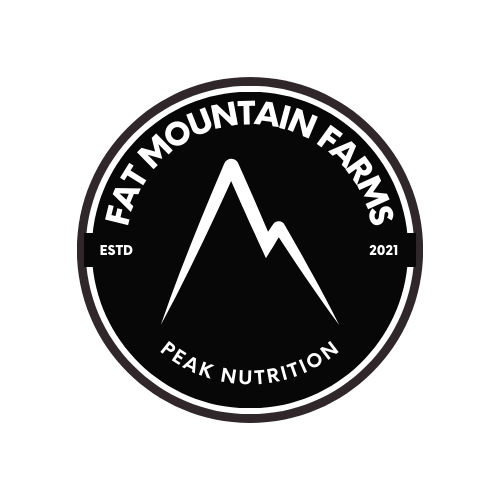It's that time of year again when the introduction of hay to ruminant animals begins to take place. Being a regenerative farmer, hay is one of our main sources of nutrients we provide to our sheep during the winter season. Because our sheep are grass-fed/grass-finished, grain-based feed is never fed to them, which is why having high quality hay is vital to ensure our sheep receive adequate nutrition. However, finding this high quality hay is rare.
A lot of the time, farmers who use hay leave the bales sitting outside until it is ready for consumption. If there is a lot of rain fall or flooding, these hay bales can build up a significant amount of of moisture and heat, creating mold. Feeding moldy hay to ruminant animals can be extremely dangerous, due to mycotoxins, which can cause significant health issues. Animals that consume contaminated feeds can experience liver and kidney damage, neurologic disorders and estrogenic effects. While mycotoxins may not always cause clinical diseases, they can interact with animal stressors to decrease efficiency and reproduction and increase disease incidence. So how does a farmer, who heavily relies on hay ensure their livestock are receiving the necessary nutrition, reduce the risk of exposing them to mycotoxins?
The answer we have found is the use of unrefined apple cider vinegar (ACV). The reason why ACV is so effective at creating "super-hay" is because it stimulates the cellulosic bacteria of the rumen, the specific bugs that digest cellulose and hemicellulose, creating extremely digestible fiber, which is where all the energy is stored. When ruminant animals consume moldy hay, they cannot digest the fiber in the hay or simply won't consume it. When the fiber can't be digested, all the good energy sources go to waste which can be seen in their manure. But, with the use of ACV, it increases forage digestion by 20%!
Because we do not bale our own hay, we have to purchase it from a supplier. A majority of farmers who bale hay do not soak their bales in ACV, which means we have to spray the content ourselves. A rule of thumb we have found is spraying one gallon of ACV per round bale of hay. In this process, we tip the bale on its side and spray the gallon of ACV on the side facing up. Once sprayed, we tip the bale back up right and allow the ACV to soak through the entire bale and distribute it evenly. We perform this to every bale the day before use.
Finding high quality hay before spraying ACV can be difficult too. When our farm first began, we did not have the resources to find high quality hay. We would feed the regular hay to our livestock and notice a significant decrease in performance from our sheep. However, knowing what we know now, ACV works even better on poor quality hay! Because ACV reduces the temperature of the overall bale, it will kill the bad bacteria and encourage the good ones to come alive. There is no mold present and our sheep are receiving enough nutrients to help them maintain high performance throughout the winter season.
For the past two years, our farm has learn't whatever problems nature provides, she also provides the solution. Finding the natural solution can be tricky and usually results in farmers using chemical alterations to fix nature's problems. It takes research and testing to see what natural remedies resolve your problems. When found, it provides a much more sustainable farm and a happier life for your livestock.
